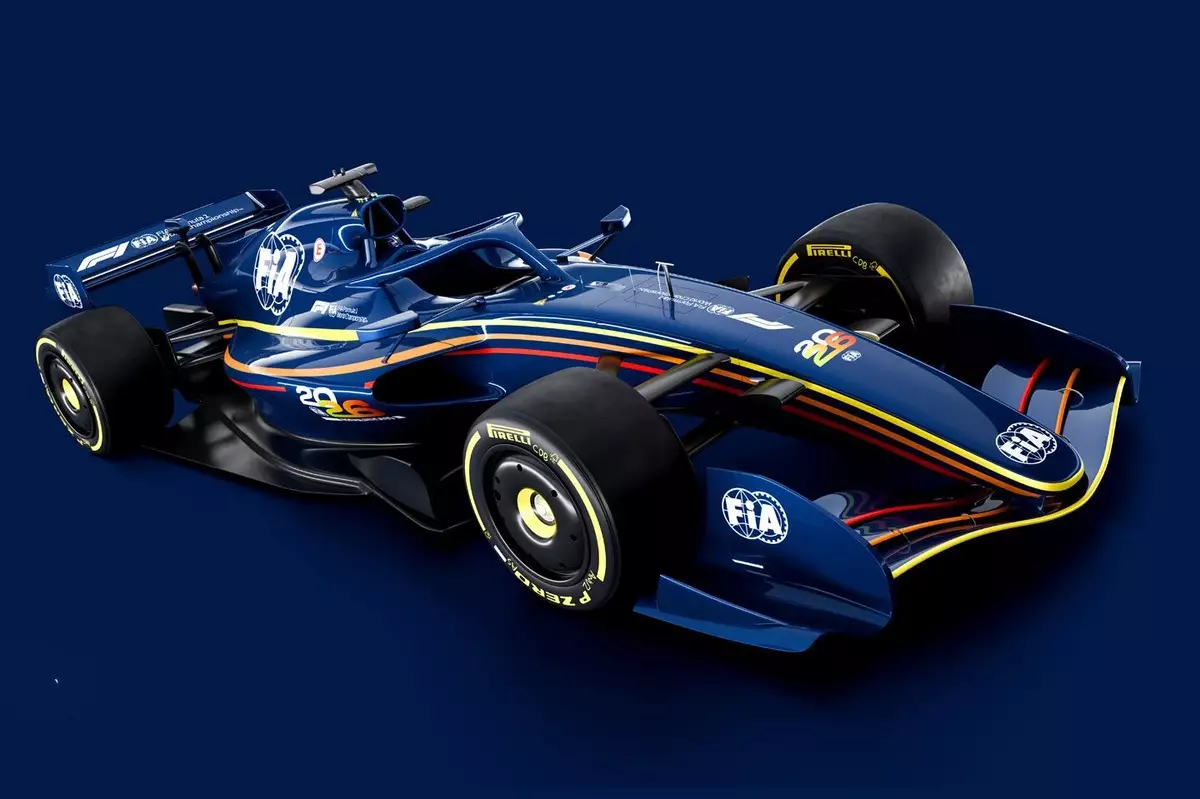The upcoming regulation changes for 2026 mark a pivotal juncture in Formula 1’s relentless quest for innovation. While some observers fixate on lap times and technical specifications, it’s crucial to recognize that these modifications are less about slowing down cars and more about redefining the racing paradigm. The new regulations aim to prioritize close, exciting competition over mere raw speed, signaling a strategic move towards preserving the sport’s integrity and viewer engagement.
The anticipated modifications, such as reduced downforce and the elimination of DRS, will undeniably alter the technical landscape. Cars will be faster on straights but significantly less agile through corners, creating a new balance of performance. This trade-off, far from being a handicap, is an intentional design choice to enhance overtaking and reduce aerodynamic turbulence—an issue that has long challenged racing fans and teams alike. The engineers and strategists now face a fresh challenge: optimizing this new mix of speed and handling while maintaining the spectacle of wheel-to-wheel combat.
Rather than obsess over lap times, the message from FIA’s leaders emphasizes a different narrative—one that values overtaking opportunities, strategic variability, and driver skill over transient metrics. This shift hints at a broader philosophical change: racing as a more thoughtful and nuanced sport. The initial simulations suggest cars will be marginally slower, but that is merely a starting point, not a ceiling. As teams adapt and evolve their designs, the fastest lap will matter less than the overall race craft. In this context, the focus on “close racing” is not just a marketing slogan but an essential evolution to keep the sport fresh and unpredictable.
Ultimately, the regulation overhaul underscores an acknowledgment that Formula 1 must evolve beyond raw speed to remain relevant. The sport’s core excitement has always been its unpredictability, the strategic chess match between drivers and teams. These changes are an investment in that legacy, deliberately shifting focus onto racecraft, tactical innovation, and driver adaptability. Instead of lamenting the slower lap times, fans and insiders should view this as an opportunity to witness a refined form of racing—less one-dimensional and more engaging in its nuance.
Technological Innovation and Strategic Overhaul: Rethinking Overtaking and Aerodynamics
A defining feature of the 2026 overhaul is the removal of DRS, which has been a staple of overtaking for years. Instead, the sport introduces active aerodynamics with a Manual Override Mode—a form of “push-to-pass.” This new system promises to add a layer of strategic complexity, demanding skill and timing from drivers to maximize overtaking chances. Unlike DRS, which can sometimes feel artificial or overly dominant, the boost mechanism aims for a balanced approach: powerful enough to influence a race but not so effortless as to undermine the skill required.
This evolution highlights a broader trend in motorsport: integrating technological innovations that enhance strategic depth. With the active aero modes, teams will need to develop tactical timings—deciding precisely when to deploy the boost to gain an advantage, especially on tracks where overtaking is historically challenging. This emphasis on driver input and team coordination resonates with F1’s core principle of human skill harmonized with cutting-edge engineering.
Moreover, the shift away from pure downforce reliance encourages designers to pursue new solutions for car handling. Reduced aerodynamic grip will require teams to rethink chassis and suspension setups, fostering innovation and potentially leveling the playing field. This technical reset forces teams to innovate in areas previously overshadowed by aerodynamics, such as powertrain efficiency and mechanical grip, leading to a more diverse competitive landscape and elevating the technical race behind the race.
The strategic implications are profound. Drivers accustomed to DRS overtakes may need to adapt their approach, focusing more on timing, track position, and psychological pressure rather than relying solely on aerodynamic aids. Fans will witness a more intricate dance of tactics, where overtaking becomes a calculated endeavor rather than a straightforward slipstream maneuver. This layered complexity is likely to produce more memorable battles and a greater appreciation for driver skill and engineering ingenuity.
Balancing Progress and Tradition: A New Era with Clear Purpose
Despite the technological upheaval, the FIA’s messaging underscores confidence that the essence of racing—intensity, skill, and unpredictability—will endure. Concerns about slower lap times and altered race dynamics seem secondary to the broader objective: creating a more engaging, fair, and sustainable sport. The focus on close racing and overtaking reflects an understanding that motorsport’s appeal lies not just in outright speed but in the strategic chess game played out on track.
The challenge for teams and drivers will be adapting swiftly to these changes, turning potential disadvantages into new strengths. The transition period will test the ingenuity of engineers and the adaptability of drivers, who must recalibrate their driving styles to excel under the new aerodynamic regimes. It is this blend of technological reset and strategic recalibration that offers the sport a chance to reinvent itself for the modern era.
Critically, these reforms demonstrate an understanding that F1’s future depends on innovation aligned with fan engagement. By prioritizing overtaking opportunities and introducing elements that demand driver skill—like the active aero modes—the sport aims to provide a spectacle that is both unpredictable and thrilling. This evolution implies a confident belief that faster isn’t always better; rather, thoughtful engineering, strategic depth, and driver finesse will define the new golden age of Formula 1.
In embracing this transformation, Formula 1 is not diluting its prestige but refining its identity. The 2026 regulations stand as a bold statement: that the sport’s greatness lies in its capacity to evolve while staying true to the core values of competition, innovation, and excitement. This is not a retreat into slower cars but a leap toward a more dynamic and engaging racing future—one designed to captivate fans and challenge the very definition of speed itself.

